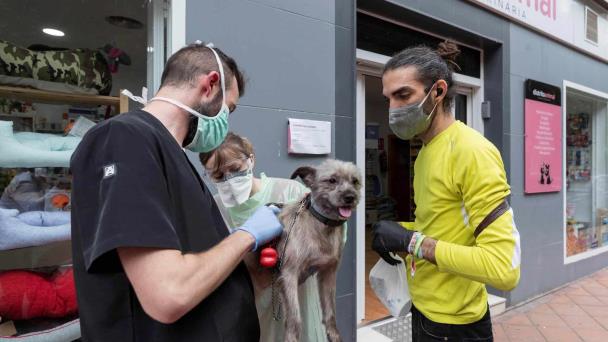Zoonotic diseases pose a public health problem

Buenos Aires, Argentina.
zoonotic diseasestransmitted directly from vertebrates to humans, are 75% of new infectious diseases and they represent a health, social and economic problem for the communities they affect.
For this reason, every July 6, the World Health Organization (WHO) and the Pan American Health Organization (PAHO) promote World Zoonoses Daya day when organizations, companies and industry professionals remember that
The implementation of methods for preventing this type of disease within the framework of public-private cooperation must be “transcendental”, since human health largely depends on the health of animals.
The day was named to commemorate the first use of the rabies vaccine in 1885 by a famous French scientist. Louis Pasteurused on a 9-year-old boy who was bitten by a rabid dog.
But Carol Galli, director of pet marketing for Biogenic Bagó, recalls in an interview that transmission routes belonging zoonotic diseases They are very diverse and are not limited to animal bites.
- Ebola, Covid-19 or leishmaniasis are among the list of pathologies of this type, which in some cases are transmitted through food.
“Three out of every five diseases that occur each year are of zoonotic origin,” says an expert from an Argentine company.
“RAbia is 100% preventableBut if after a few weeks (infected) people develop symptoms, they can be fatal,” – warns Bago, who is responsible for biogenesis, who recommends acting directly on the carriers of the infection.
- The first step to avoid spreading zoonotic diseases It is the vaccination of pets and animals that can spread diseases.
In addition, Galli mentions other suitable methods such as fumigation, tick and other insect control or pest management. illegal animal trade.
Health experts warn that factors such as climate change, increasing population mobility or the growth of urban settlements They also influence the prevalence belonging zoonotic diseases.
However, improving animal welfare remains the most pressing aspect of preventing animal diseases such as rabies, a virus present on five human-inhabited continents. It kills nearly 60,000 people every year.
“Every nine minutes, one person dies from rabies,”
said the segment’s marketing director Biogenesis of domestic animals Bagowhich estimated that rabies has significant global costs, estimated at approximately $8.6 billion per year.
He 54% of these expenses correspond to losses incurred on premature deaths of people injured by animal bites; 37% on treatment of patients; and only 2% on vaccination of dogs or population control.
“Everyone’s awareness is important (…) Wash a dog bitepossibly rabid, with soap and water you can destroy the lipid layer containing the rabies virus.
Then it is imperative to immediately contact a medical center to receive appropriate treatment,” Galli emphasizes.
